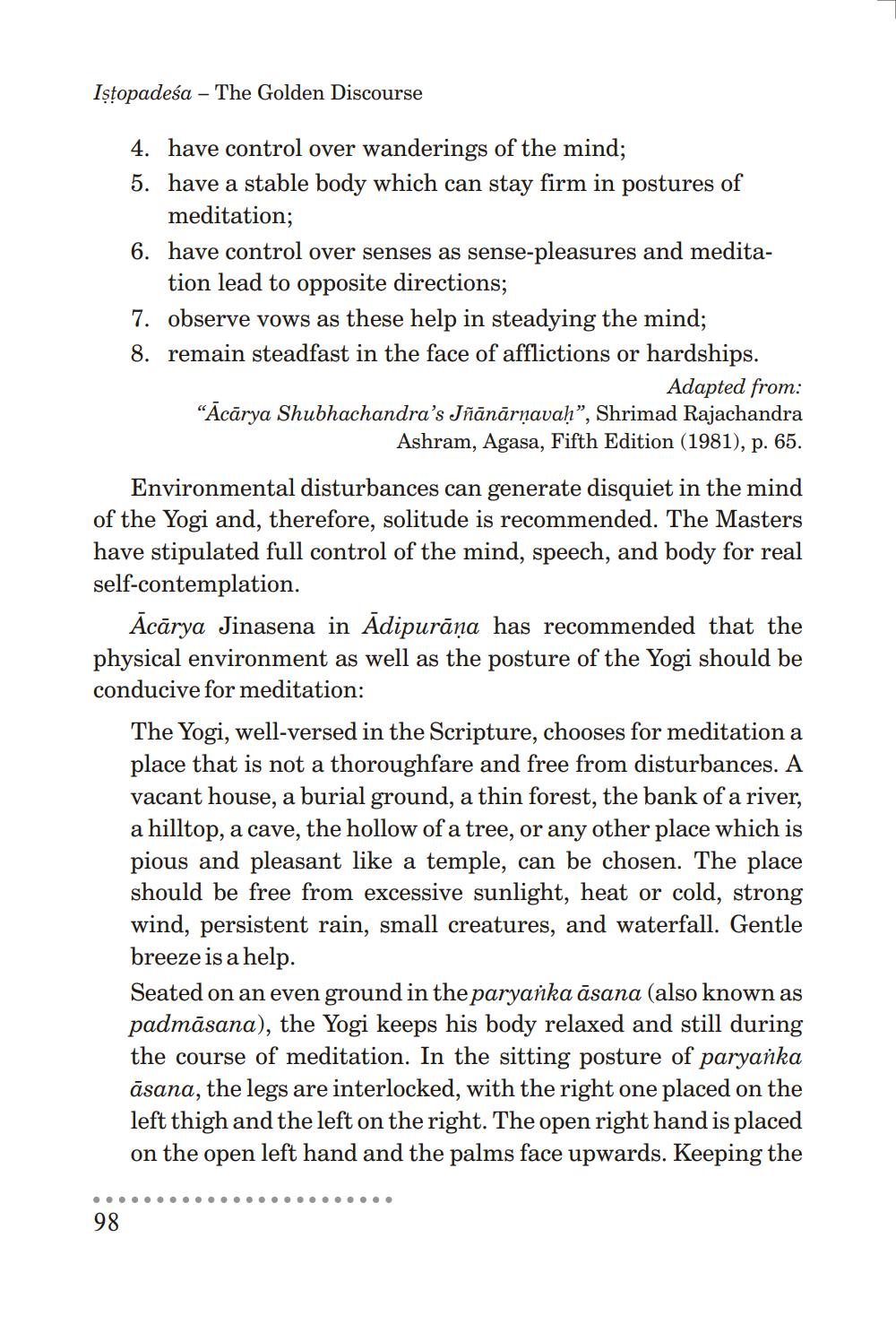________________
Iṣṭopadeśa - The Golden Discourse
4. have control over wanderings of the mind;
5. have a stable body which can stay firm in postures of meditation;
6. have control over senses as sense-pleasures and meditation lead to opposite directions;
7. observe vows as these help in steadying the mind; 8. remain steadfast in the face of afflictions or hardships. Adapted from:
98
"Acarya Shubhachandra's Jñānārṇavaḥ", Shrimad Rajachandra Ashram, Agasa, Fifth Edition (1981), p. 65.
Environmental disturbances can generate disquiet in the mind of the Yogi and, therefore, solitude is recommended. The Masters have stipulated full control of the mind, speech, and body for real self-contemplation.
Acārya Jinasena in Ādipurāṇa has recommended that the physical environment as well as the posture of the Yogi should be conducive for meditation:
The Yogi, well-versed in the Scripture, chooses for meditation a place that is not a thoroughfare and free from disturbances. A vacant house, a burial ground, a thin forest, the bank of a river, a hilltop, a cave, the hollow of a tree, or any other place which is pious and pleasant like a temple, can be chosen. The place should be free from excessive sunlight, heat or cold, strong wind, persistent rain, small creatures, and waterfall. Gentle breeze is a help.
Seated on an even ground in the paryanka asana (also known as padmāsana), the Yogi keeps his body relaxed and still during the course of meditation. In the sitting posture of paryanka āsana, the legs are interlocked, with the right one placed on the left thigh and the left on the right. The open right hand is placed on the open left hand and the palms face upwards. Keeping the




